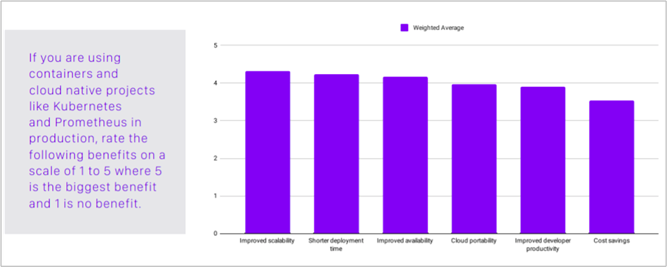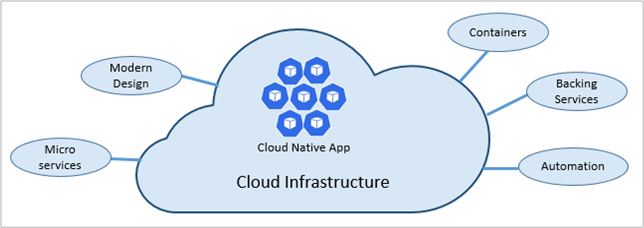Migrating from Legacy to Cloud Native
Introduction
More than 45% of IT spending will be reallocated from legacy IT systems to cloud solutions by 2024. Such statistics point to a confident market, ready to migrate from legacy IT infrastructure to sophisticated cloud native solutions.
However, many organisations are heavily bogged down by complex monolithic legacy software and struggle to keep up with a rapidly evolving business environment. To break up this excessive complexity, companies need to re-platform and rebuild their applications into cloud native services.
Cloud native computing involves more than hosting your applications in a cloud environment – it means acquiring and optimising multiple cloud capabilities to increase software availability and agility.
Additionally, cloud native computing looks at abstracting your applications from legacy infrastructure that requires point and click management of resources into an automated infrastructure-as-code environment.
Developers can code the desired end state then automate all other workflow processes to focus on software optimisation. As a result, migrating your existing legacy software to cloud native architecture promises tangible benefits. A cloud native approach has proven to reduce deployment complexity, lower costs, reduce application downtime, and deliver highly reliable software to customers.
From a 2020 Cloud Native Foundation Survey, 51% of respondents stated improved scalability, shorter deployment time, and consistent availability as the top benefits for using cloud native technology in their projects. In addition, other benefits of cloud native computing identified from the survey include cloud portability, cost savings, and improved developer productivity.
(Image source: cncf.com)
So how do you migrate your legacy systems to a cloud native environment? Below, we outline the migration process and provide you with an assessment framework to analyse your organisation’s migration readiness. Additionally, we highlight the key attributes to look for in a migration services partner.
The Distinction between Cloud and Cloud native Computing
It's important to acknowledge the distinction between cloud and cloud native computing as you plan to migrate your legacy systems to cloud native environments.
(Image source: microsoft.com)
The cloud, without any additions, refers to storage delivered through the internet for your applications, servers, databases, and software. On the other hand, cloud native is a software development approach that utilises modern technology such as Kubernetes containerisation to run and deploy applications through private, public, or hybrid cloud.
With cloud-only services, you consistently have to tweak the infrastructure whenever you deploy applications. But with cloud native technology, your applications run on stateless servers and immutable infrastructure that doesn't require constant modification.
So, in essence, the cloud native methodology is an upgrade from simply hosting your applications on cloud platforms. The approach goes a step further to transform a monolithic legacy software into agile cloud native microservices that deploy and scale independently with minimal downtime.
Assessing Your Organisation’s Migration Readiness
A migration readiness assessment is a process that involves curating migration tools, reviewing your current environment, identifying problem areas and appropriate solutions, then developing a migration strategy.
CIOs and business leaders need to ask themselves the questions below to clarify their migration readiness further. These questions will help you develop a clear and concise migration roadmap.
Have You Developed a Business Case and Scope for Migrating to Cloud native Computing?
Building a business case for cloud native migration requires you to present hard facts and financial projections to justify such a significant investment. Start by determining the Total Cost of Ownership (TCO), migration resources required, and projected revenues from adopting the cloud native technologies.
Additionally, work with an experienced migration partner while developing the business case. It will help you avoid operational blindness that comes with overfamiliarity to the business and give you the perspective from a competitor's angle.
Have You Evaluated the Legacy System and Identified Parts to Migrate?
This question helps you identify the parts within the existing system that'll migrate to the cloud native environment. These parts include data, the current format the data is in, and the application's architecture.
Most legacy software is built on stacks that include a backend, databases, middleware, and a User Interface (UI), all within the application's server that may require extensive code changes to migrate. You'll need to break down the application's architecture and package the new microservices into Kubernetes containers.
Some applications may not require extensive tweaking and can migrate as-is, however. Discuss with your migration partner to identify conversion methods that don't require reconfiguring the application’s workloads.
Next, determine the technical requirements and time needed to migrate the legacy system to a cloud native environment. Again, the best approach is the agile methodology, where you continuously iterate at each implementation stage before rolling out the subsequent phases.
What Security Solutions Will You Need for Your Cloud native Environment?
Another crucial aspect of migration is security. Migration to cloud native computing requires a different approach to security compared to what you had in your legacy software. With cloud native landscapes, the best approach adopted by 41% of organisations is embedding security solutions throughout the software development cycle.
Additionally, both the client and service provider are responsible for security. The client is responsible for securing their internal assets (data, APIs, apps) hosted in the cloud native environment. At the same time, the migration service provider ensures the security of the overall landscape (infrastructure, storage, containers, etc.).
During the migration process, you’ll need a security solution that:
- Gives you more visibility across the entire cloud native infrastructure.
- Manages regulatory and industry compliance. Operating in cloud native environments requires you to comply with the General Data Protection Regulation (GDPR) standards. Ensure your provider implements compliance features to monitor your cloud native services during and after migration.
- Automates security workflows. A highly automated security solution reduces non-compliance and frees up your security team from routine tasks so they can focus on more strategic work.
Furthermore, there are several security tools you can deploy during the migration process. These tools protect your data in transit from the legacy system and secure the networks transmitting your applications.
They include:
- SQL injection tools
- Broken authentication and session management
- Cross-Site Tracing (CST) software
- Application penetration testing
- HTTP parameter pollution testing
- Cross-Site Scripting (XSS)
How Will You Bridge the Skills Gap and Prepare Your Talent to Manage the New Environment?
With the current skills gap in the cloud landscape affecting more than 86% of IT enterprises, identifying the right strategy to train and retain cloud native talent will determine the success of your migration strategy.
Start by training the team on data security, accessibility, and availability, because data is the most crucial asset in a cloud native environment. Next, identify specific modules within the new platform that need specialised skills and provide appropriate training.
For example, your current developers will need programming languages and tools to build container-based development environments, microservices, and tools.
In areas where you still have a skills gap and the current staff cannot bridge it, your best option is to plug in your service provider's staff. The migration partner already has a team trained in cloud native services who can be assigned to you on a rotational basis.
Do You Have a Migration Partner That Understands Your Needs and the Company’s Vision?
Securing the right migration services provider is the foundation of a successful migration process.
A good migration partner has extensive experience spanning years and different industries.
Additionally, the service partner should provide cloud hosting options that integrate your existing public cloud platforms.
This way, you’ll not encounter single vendor lock-in limitations and can scale your cloud native applications across multiple platforms while optimising your Total Cost Of Ownership (TCO).
Who Is Responsible for Leading the Migration from Legacy to Cloud Native?
Appointing a team leader to own the migration process reduces friction and ensures each migration phase meets the deadline. In most cases, the Chief Technology Officer (CTO) or Chief Information Officer (CIO) is the one who leads the migration process. They own the migration strategy and can influence a cultural and technological shift within the organisation.
The CTO/CIO should also treat the migration journey as an overall change management process. Moving from a legacy system to a cloud native environment is not just about acquiring a new work tool – it's also an opportunity to drive business transformation and influence your company's culture in the desired direction.
To achieve this, the leader needs to work with management across all business functions to get buy-in and implement cloud native solutions for their operations.
What Are the Key Performance Indicators (KPIs) to Measure Success During and Post-Migration?
Establishing Key Performance Indicators (KPIs) before starting the migration to a cloud native environment helps you measure the implementation performance against expectations. For example, are performance metrics you set for your applications matching the metrics within a cloud native environment?
Below is a demonstration of how to categorise application components into cloud native metrics:
| Component | Sample cloud native performance metrics |
| User experience | Server and application response time
Page load time System lag Session duration |
| Application performance | Request latency
Application availability Error instances Deployment run intervals |
| Infrastructure | Network throughput
Container memory and CPU usage K8s utilisation (nodes, pods, deployments) Mean Time To Recovery (MTTR)
|
| Software testing | Percentage (%) of automated testing |
Migration Execution: How It Works
These are the specific steps zsah takes to migrate your legacy applications to a cloud native environment.
Knowledge Transfer
Migrating from legacy platforms starts by assessing your current software’s architecture to know your application in all its detail. The assessment looks at the planning backlog, the app’s portfolio analysis server statistics, and data flows to understand the platform’s functionality.
From here, we define the optimal cloud strategy to future-proof your application and ensure you have a smooth migration journey that is cost-efficient and predictable.
App Containerisation
Next, our engineers containerise your application, building appropriate Dockerfiles to support your app, along with its services and dependencies. Think of a Dockerfile as a blueprint – a set of instructions – to make an image. An image is responsible for setting up the application and environment that will exist inside the container, while the container itself is what runs the app.
Automate Kubernetes
In the next step, we build Helm Charts to automate the deployment of your application whenever you want to do a release. Helm is a package manager for the container orchestration tool Kubernetes (K8s). A Helm Chart can contain any number of K8s objects and is seen as a blueprint for automating releases to Kubernetes. Automating Kubernetes workflows has multiple benefits, which include:
- Automation manages Kubernetes deployment configurations.
- Deploys code modifications
- Manages Dockerfile changes and updates
- Applies new images to your Kubernetes clusters
- Automatically builds and pushes Docker images to the registry.
Rest Assured
We also set up in-depth, 24/7 monitoring specific to the applications you deploy to the Kubernetes cluster as part of the migration. We are available around the clock throughout the process to guide you through best practices, answer your questions, and ensure a smooth transition to a cloud native environment.
Congratulations!!
You've completed the first step in your journey, and your application is now cloud native. To reap maximum benefits, our team of certified experts will work with you to re-architect your legacy application into microservices, fully optimised to run on a containerised platform, enabling increased scalability, agility, and improved security.
Determining the Right Migration Services Partner for You
Establishing the right migration partner ensures you meet your migration timelines and manage costs along the way. Here are factors to consider while choosing a migration service provider.
Industry Familiarity
Your ideal migration partner should have a decent knowledge of your industry, including regulations, policies, and competitors. Additionally, familiarity with your industry will help mitigate pitfalls that other clients like you face during migration.
Service Level Agreements (SLAs)
A customer-focused SLA ensures you work with partners who accommodate customer needs and emergencies. You want a service provider who quickly responds to issues and administers solutions as needed. Ensure to include these requirements into the SLA.
Professional Expertise
A good cloud native partner should have the required certifications and accreditations that confirm they have knowledge and skills in cloud native technologies.
Are you ready to speed up your release pace and improve user experiences? Do you want to reduce costs through containerisation and cloud standards? And, are you prepared to build more reliable systems, eliminate vendor lock-in, and run scalable applications in modern, dynamic environments?
zsah is ready to get you there. Our migration services are designed to successfully move your application from legacy environments to new cloud native architectures so you can reap all the advantages they offer.




